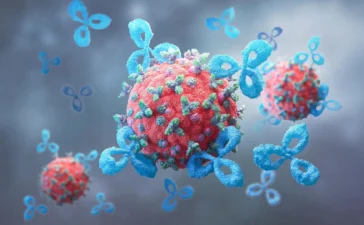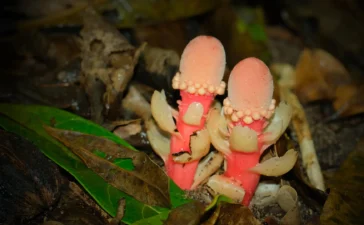Newly published research from UNC Greensboro biology professor Dr. Bryan McLean and colleagues shows that the masked shrew, a small, mole-like mammal found in the Appalachian Mountains, shrinks its body and braincase to conserve energy during winter months.
The study, published in the May 2025 issue of The American Naturalist, found that the masked shrew (Sorex cinereus) reduces its body mass by 13 percent in the colder months; the creature then grows larger in spring when conditions improve. In addition to a shrinking body, the team also found seasonal changes in the height of the creature’s braincase (the portion of the skull that houses and protects the brain) and the length of the femur.
“Shrinking the body and its parts is in fact a clever survival strategy,” says McLean. “And it’s one that’s important for us to understand as mammals face a constantly changing planet.”
Known as Dehnel’s phenomenon, this seasonal shrinking has been observed in other mammals but most often in shrews, which are small, insect-eating animals unrelated to rodents. Dehnel’s phenomenon is an extreme example of “phenotypic plasticity” — the ability of an organism to alter its physical form in response to environmental changes.
“We don’t know how common Dehnel’s phenomenon is among mammals, but we know it is rarer in nature than other energy-saving strategies mammals use, like hibernation,” said McLean.
McLean and his team of graduate and undergraduate students analyzed 125 masked shews that were trapped in North Carolina’s Pisgah National Forest from 2021 to 2023. The team used “pitfall traps” buried in leaf litter to capture the shrews. The animals were weighed in the field, then brought to UNCG’s Joint School of Nanoscience and Nanotechnology for microCT scans to examine various skeletal dimensions. Specimens and associated data are archived in the UNCG Mammal Collection. Researchers from Georgia Southern University were also involved in the research.
“Our population of masked shrews is the southern-most yet studied for these multiple different traits,” said McLean, “and the femur measurements we made are the first to show the magnitude of seasonal change in the long bones of the skeleton. This shows that shrews rapidly remodel much of their skeleton.”
Most prior studies of the phenomenon come from Europe. To place their new results in context, the researchers also conducted a meta-analysis of 74 other studies from across the Northern Hemisphere, combining that research with their own findings to understand what factors drive Dehnel’s phenomenon. McLean and his team developed statistical models that accurately predicted the amount of body shrinkage they observed based solely on the climate at the North Carolina site.
“This analysis reveals the generality of Dehnel’s phenomenon in Sorex shrews,” explains McLean. “Across many populations of shrews on three continents, the degree of body mass and braincase height shrinkage is greatest in areas with the lowest cool-season temperatures. So, fall and winter temperatures predict Dehnel’s phenomenon in these animals.”
“Phenotypic plasticity is a key way that shrews and many other species respond to changes in temperature,” McLean notes. “By learning more about this process, we can start to understand how mammals buffer against rapidly changing climates.”
You Might Also Like
Eating more vitamin C can physically change your skin
Scientists at the University of Otago, Faculty of Medicine -- Christchurch Ōtautahi, have identified a direct connection between how much...
MIT scientists strip cancer of its sugar shield
A research team from MIT and Stanford University has developed a new technique designed to push the immune system to...
This “mushroom” is not a fungus, it’s a bizarre plant that breaks all the rules
In the damp shade beneath moss-covered trees, high in the mountains of Taiwan and mainland Japan or deep within the...
A quantum mystery that stumped scientists for decades is solved
A global research team led by Rice University physicist Pengcheng Dai has verified the presence of emergent photons and fractionalized...









